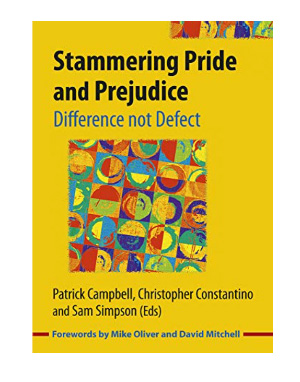This is the first of a continuing series discussing a selection of essays from the 2019 text, Stammering Pride and Prejudice, Difference not Defect, edited by Patrick Campbell, Christopher Constantino and Sam Simpson.
The first essay by Joshua St. Pierre, “An introduction to stuttering and disability theory: misfits in meaning,” is the most theoretical of the essays, discussing theory and different conceptual models of disability and stuttering. The subsequent articles are not as academic, but this is a good piece to describe some of the concepts behind the changing ways we are thinking about disability.
What is Normal?
The conventional lens through which disability is viewed has been the medical model. To be disabled is an issue of biological defect, requiring assessment and treatment by the medical establishment. Medical intervention involves the disabled person being a recipient of treatment and obeying the directions and advice of the clinician, to strive for “normalcy. “
The most predominant shift in the past fifty years among the disabled has been towards the social model. The movement, started in the UK, distinguishes between “impairment” (a medical condition) and “disability” (a condition imposed by society). Being paraplegic is an impairment, not being able to use public transport is a disability. People are disabled because society is organized in a way that excludes them.
The Political/Relational Model
The political/relational model moves beyond the medical model, that centres on a reliance on medical experts, and the social model, that sets up a goal of social change. Going further, the political/relational model looks at disability as a political category, and something that is experienced through relationships, including with oneself. A disability, such as stuttering, is not an indication of “abnormality” but an expression of difference. Medical intervention is not rejected, but it is understood in the relationship with an SLP, that people who stutter are the experts on their own stuttering, and they are equal partners in the treatment journey. It is sought, and implemented, on their own terms.
Stuttering is not a pleasant experience. There’s no use in trying to pretend it is. However, we do not need to internalize negative views of stuttering. Nor do we need to react negatively to our own stuttering: we can, as St. Pierre states, “appreciate our voices and unique patterns of speech while recognizing through a critical lens the challenges our voices and bodies can present.”
This outlook, of embracing speech diversity, requires changing our relationship with society and ourselves, “...that we listen more carefully to each other; that we slow down.” In this way, the world can become more habitable for dysfluent speech.
See the next review, "Scary canary: Difference, vulnerability and letting go of struggle" by Katy Bailey.
Lisa Wilder is a long time member of the CSA and a contributor to the CSA web site. She serves as the Web Manager.
